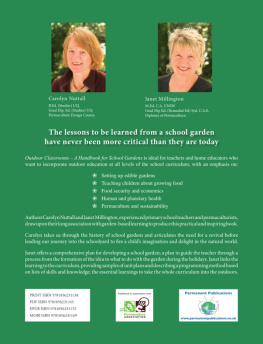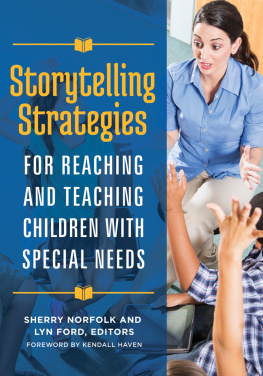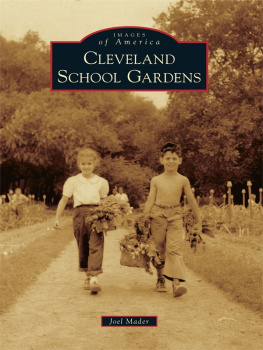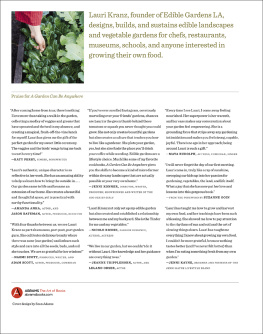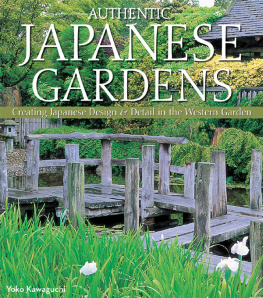OUTDOOR
CLASSROOMS
a handbook for school gardens

Carolyn Nuttall and Janet Millington
Illustrations by
Mary-Anne Cotter, Kay Schiefelbein and Jane Bottomley
Published by
Permanent Publications
Hyden House Ltd
The Sustainability Centre
East Meon, Hampshire GU32 1HR, UK
Tel: 01730 823 311
Fax: 01730 823 322
Overseas: (international code +44 - 1730)
www.permanentpublications.co.uk
Distributed in the USA by
Chelsea Green Publishing Company, PO Box 428, White River Junction, VT 05001
www.chelseagreen.com
Published in association with
Permaculture Association, London WC1N 3XX
www.permaculture.org.uk
2008 Carolyn Nuttall and Janet Millington
www.outdoorclassrooms.com.au
The right of Carolyn Nuttall and Janet Millington to be identified as the authors of this work has been asserted by him in accordance with the Copyrights, Designs and Patents Act 1998
First published in Australia 2008, 2nd edition 2012
First published in the UK 2013
Ebook editions 2013
| Design and layout: | John Dick, www.piproductions.com.au |
| Cover Illustration: | Mary-Anne Cotter |
| Editor: | Robyn Cook |
| Illustrations: | Mary-Anne Cotter, Janet Millington, Kay Schiefelbein, Jane Bottomley |
| Photographers: | John Dick, Janet Millington, Bruce Molloy |
| Support: | Sustainability @ James Cook University, www.jcu.edu.au/tropeco |
British Library Cataloguing-in-Publication Data
A catalogue record for this book is available from the British Library
PRINT ISBN 9781856231138
PDF ISBN 9781856231145
EPUB ISBN 9781856231152
MOBI ISBN 9781856231169
All rights reserved. No part of this publication may be reprodu ced, stored in a retrieval system, rebound or transmitted in any form or by any means, electronic, mechanical, photocopying, recording or otherwise, without the prior permission of Hyden House Limited. However permission is granted to the purchaser to copy any part of this book in quantities suitable for non-commercial classroom use.
Disclaimer
All due care and attention has been taken in the production of this book. The opinions expressed in it are those of the authors. All details given in this book were correct at the time of publication. All care has been taken in the preparation of the information herein, but no responsibility can be accepted by the publisher or authors for any damages resulting from the misinterpretation of this work.
Dedications
This book is dedicated to my mother Elizabeth Alice Nuttall, nee Covington, for her loving support.
This book is also dedicated to Stephen Denovan, the boy who found his way because of the school garden.
Carolyn Nuttall
I dedicate this work to all learners who teach and teachers who learn.
With thanks to those who taught me some of lifes most wonderous lessons, my mum and dad and husband Mick. Special thanks to my children Katie and David, who gave, and continue to give me such joy and wonderful memories of our times together outdoors.
Janet Millington


Acknowledgements
I wish to thank my teacher friends, Rosie OBrien who had words to fill the spaces and Pat Hong who replied with a wise head when the writing needed a listener. As well, I thank my niece Cecelia Nuttall for her help and a special gratitude to my co-writer, Janet Millington for her friendship, good cheer and hard work on this book.
Carolyn Nuttall
To Bill Mollison and David Holmgren who saw in the 1970s how we would need to build sustainable communities and make children responsible and self reliant.
I wish to acknowledge Fiona Ball and her early permaculture school gardens and Permikids and Leonie Shanahan for her passionate effort to have kids eating real food grown in flourishing permaculture gardens.
I acknowledge the support of North Arm and Eumundi State Schools who deliver inspirational educational programs and who have embraced so well the concept of outdoor classrooms.
I must also acknowledge the wonderful mind and good intent of my co-writer Carolyn for whom I have the greatest respect and to thank her for her confidence in me and our friendship that has grown during the writing.
Janet Millington

Contents
Preface

About this book
- Although written for formally qualified teachers, we strive to engage with all who work with children.
- We offer information for the development and use of the outdoors for teaching purposes. It is a range of opportunities rather than prescribed requirements.
- Our intention is to extend thinking and practice based on a new plan with new resources.
- It does not contain a large body of information about plants. This is considered to be easily accessible from other sources.
- The ideas are often fanciful but we believe are attainable at some level.
- We acknowledge that each school community is unique and that one size will not fit all.
- It is our hope that teachers, who are the architects and designers of the learning environment, will look to the outdoors for inspiration.
Introduction
H ow many teachers does it take to explain a school garden?
Well, in this case, two!
We are primary school teachers with over 60 years of teaching experience between us, many of which have been in garden-based learning. We have made the gardens and seen the benefits for the students. We have celebrated with the teachers who have found new energy and inspiration for the teaching task and we have watched as the community looked with pride over the childrens progress. These events have revealed to us the value and potential of gardens in schools. Our motivation now in our retirement years is to continue our connection with schools and to write this book because the lessons to be learned from a school garden have never been more critical than they are today.
Educators cannot stand aloof from the important decisions that need to be made. We face a future of declining oil supplies and a climate change that is set to affect our lives in significant ways. Schools will be called upon to embrace the national goal of environmental education for sustainability, a preparation and empowerment of students to assume responsibility for creating and enjoying a sustainable future. Teachers will be expected to design teaching and learning strategies to achieve these outcomes. The challenge is enormous because it is transformative on many levels.
It is our hope that this book will help to guide the way in these transitional times. We know that a school permaculture garden, as simple as the ideas seems, has the features for success in this challenge.
The book is a compilation of writings from two people with different experiences and expertise. The reader will be aware of some overlap and our different approaches but they will clearly see our shared passion for school gardens. We see the diversity as a positive feature of the book. It suggests that there are multiple pathways in the process of gardening at school and that the reader will confidently find ideas from many people to create the garden and teaching plan to suit their own situation.

